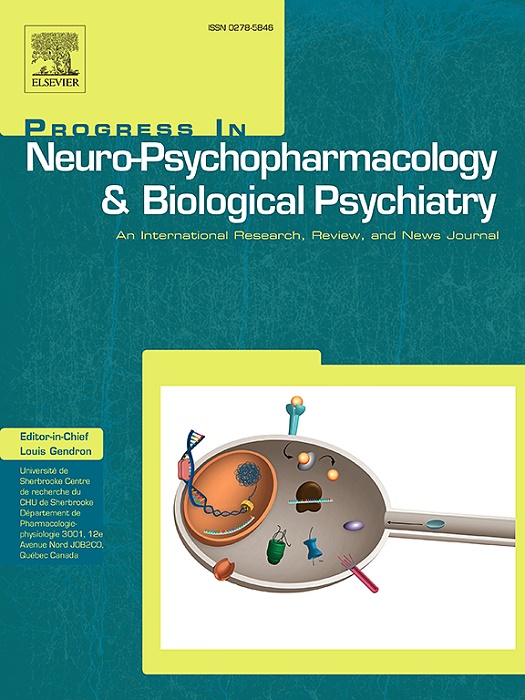The sulcal pits as neurodevelopmental markers: A systematic review about their potential use in clinical practice
IF 5.3
2区 医学
Q1 CLINICAL NEUROLOGY
Progress in Neuro-Psychopharmacology & Biological Psychiatry
Pub Date : 2025-02-07
DOI:10.1016/j.pnpbp.2025.111289
引用次数: 0
Abstract
Sulcal pits, defined as the deepest points of the cortical surface and identified as stable landmarks, exhibit a consistent emergence sequence that aligns with established gyrification patterns, underscoring their potential as markers for early neurodevelopmental trajectories. Here, we investigate the potential of sulcal pits in characterizing the etiological roots of neurodevelopmental traits and disorders.
This systematic review (PROSPERO register: CRD42022347303) was conducted according to PRISMA guidelines. Searches were performed in PubMed, Web of Science (WOS), and Scopus, initially identifying 102 articles, from which 53 were screened and 19 finally included. The articles were categorized into two main groups: those exploring the ontogenetic processes of sulcal pits and those investigating their relationship with neurodevelopmental phenotypes in health and disease.
The review findings indicate that individuals with congenital conditions or neurodevelopmental disorders exhibit distinct patterns of sulcal pits that correlate with cognitive traits. Additionally, graph analyses consistently show lower mean similarity within individuals from affected groups, suggesting that variations in sulcal pit patterns reflect the impact of neurodevelopmental disturbances.
These results highlight the potential of sulcal pits to capture instabilities in early brain development. However, they also point to a lack of comprehensive biological interpretation in the current literature. Further research is needed to enhance our understanding of the significance of sulcal pits in neurodevelopmental outcomes and to advance their use as diagnostic tools.
求助全文
约1分钟内获得全文
求助全文
来源期刊
CiteScore
12.00
自引率
1.80%
发文量
153
审稿时长
56 days
期刊介绍:
Progress in Neuro-Psychopharmacology & Biological Psychiatry is an international and multidisciplinary journal which aims to ensure the rapid publication of authoritative reviews and research papers dealing with experimental and clinical aspects of neuro-psychopharmacology and biological psychiatry. Issues of the journal are regularly devoted wholly in or in part to a topical subject.
Progress in Neuro-Psychopharmacology & Biological Psychiatry does not publish work on the actions of biological extracts unless the pharmacological active molecular substrate and/or specific receptor binding properties of the extract compounds are elucidated.

 求助内容:
求助内容: 应助结果提醒方式:
应助结果提醒方式:


